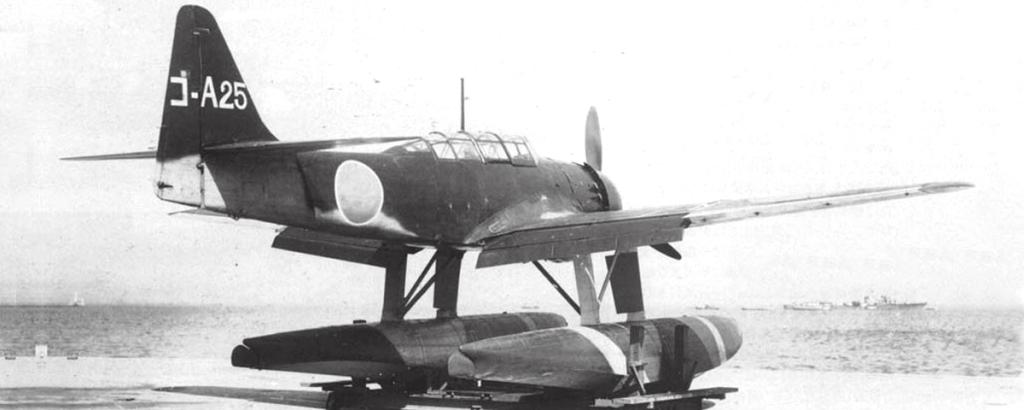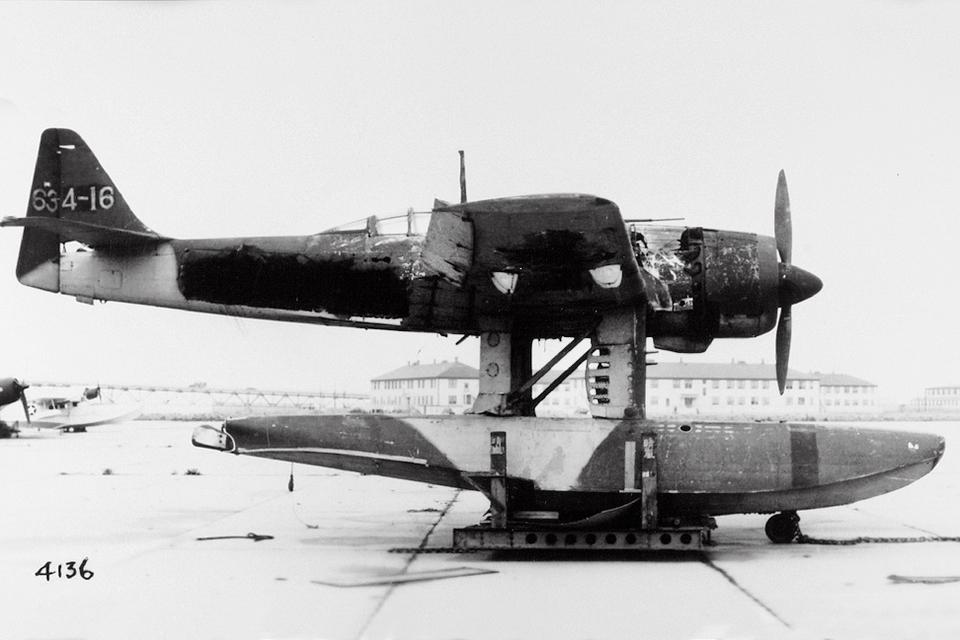This captured Aichi E16A1, shows the ingenious folding dive brakes mounted on the forward struts that attach the aircraft to its floats. The Japanesenavy, reflecting its satisfaction with the E13A1, drew up a new specification based on Aichi’s design early in 1941. Work proceeded apace, and in May 1942 the first of three prototypes made its maiden test flight. At that point, the AM-22 hit its first snag when its test pilot reported instability in flight and buffeting from the dive brakes. It took the Aichi team 15 months of redesigning to resolve those problems, but in August 1943 the navy finally accepted the plane for production as the E16A1 reconnaissance seaplane Model 11, nicknamed Zuiun, or “auspicious cloud.” The Allies code-named it “Paul.”
Japan’s Floatplane Dive Bomber
The E16A1 was all metal, save for the tail-plane and wingtips, which were made of wood, and fabric-covered control surfaces. In addition to the strut-mounted dive brakes— which were solid on early aircraft but perforated with multiple holes or quintuple slots in later models—the wings had conventional Fowler-type trailing-edge flaps and could be folded for shipboard storage. Each of the single-step floats featured a rudder.

- Knowledge Library

- MKL Entry of the Month
- Australia
- Austro-Hungarian Empire
- Canada
- Czechoslovakia
- Denmark
- Finland
- France/Belgium
- Germany
- Italy
- Japan
- Norway
- Russia
- South America
- Sweden
- Switzerland
- Turkey
- United Kingdom
- United States
- Yugoslavia
- Is my rifle authentic or a fake?
- Jay Currah's Lee Enfield Web Site
- On-line Service Records (Canada)
- Technical Articles/Research
- Forum
- Classifieds

- What's New?
-
Photo Gallery

- Photo Gallery Options
- Photo Gallery Home
- Search Photo Gallery List
-
Photo Gallery Search
- Video Club

- iTrader













 PM
PM